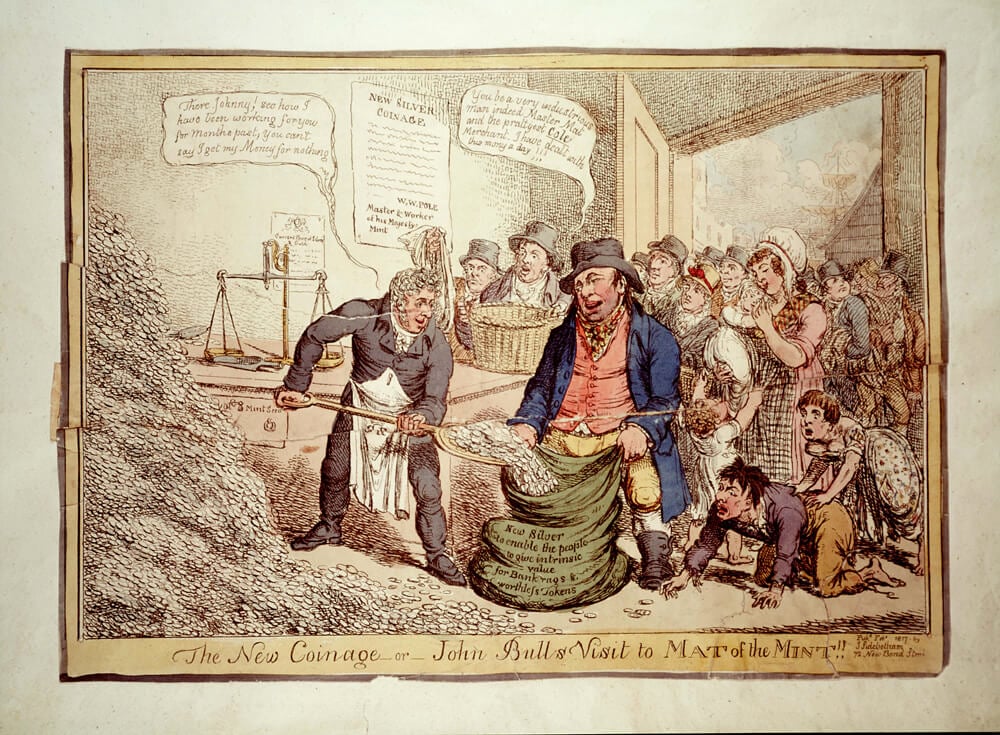The New Coinage cartoon
Copper and silver coinage had long been neglected by the governments of the eighteenth century, resulting in worn coins which the government now judged unfit for Regency ambition. The falling quality of coins, and the increasing volume of counterfeits, were also issues in dire need of resolution. In an effort to combat these falling standards, a large operation began to produce and replace half crowns, shillings and sixpences. Under the direction of William Wellesley Pole, the diligent Master of the Mint, extra machinery and staff were brought in to produce and stockpile coins in preparation for the exchange on 13 February 1817. It went smoothly, with not one bag or box being lost, and millions of coins replaced in little more than a fortnight. By the end of the year, over £4 million new silver coins had been issued.

It is no surprise that this event attracted the attention cartoonists, one of whom depicts Pole shovelling coins into a bag for the symbolic John Bull. The words on the sack read ‘New Silver to enable the people to give intrinsic value for Bank rags & worthless Tokens’ and the frenzied crowd in the background of the cartoon represented the public demand for the restored coins.
